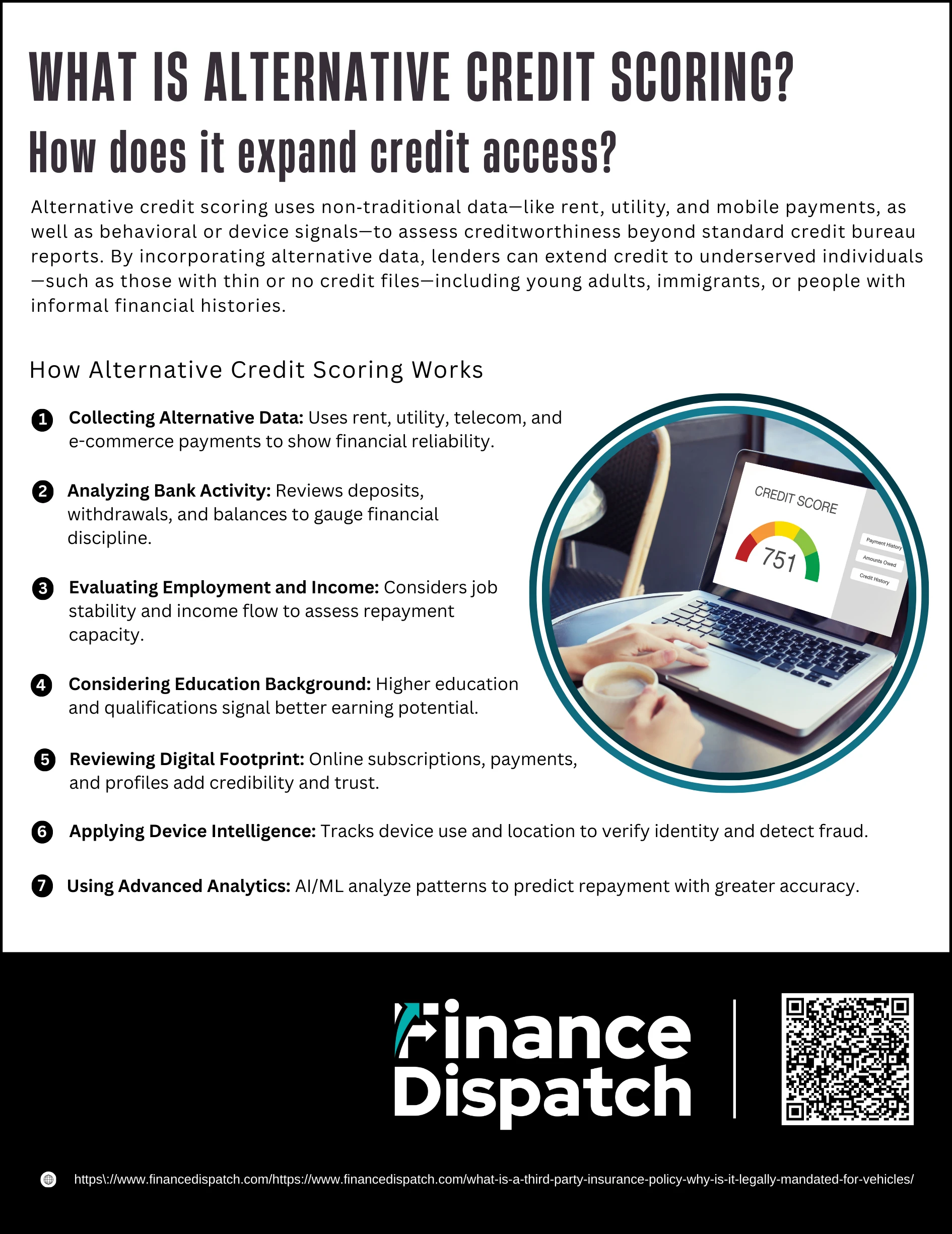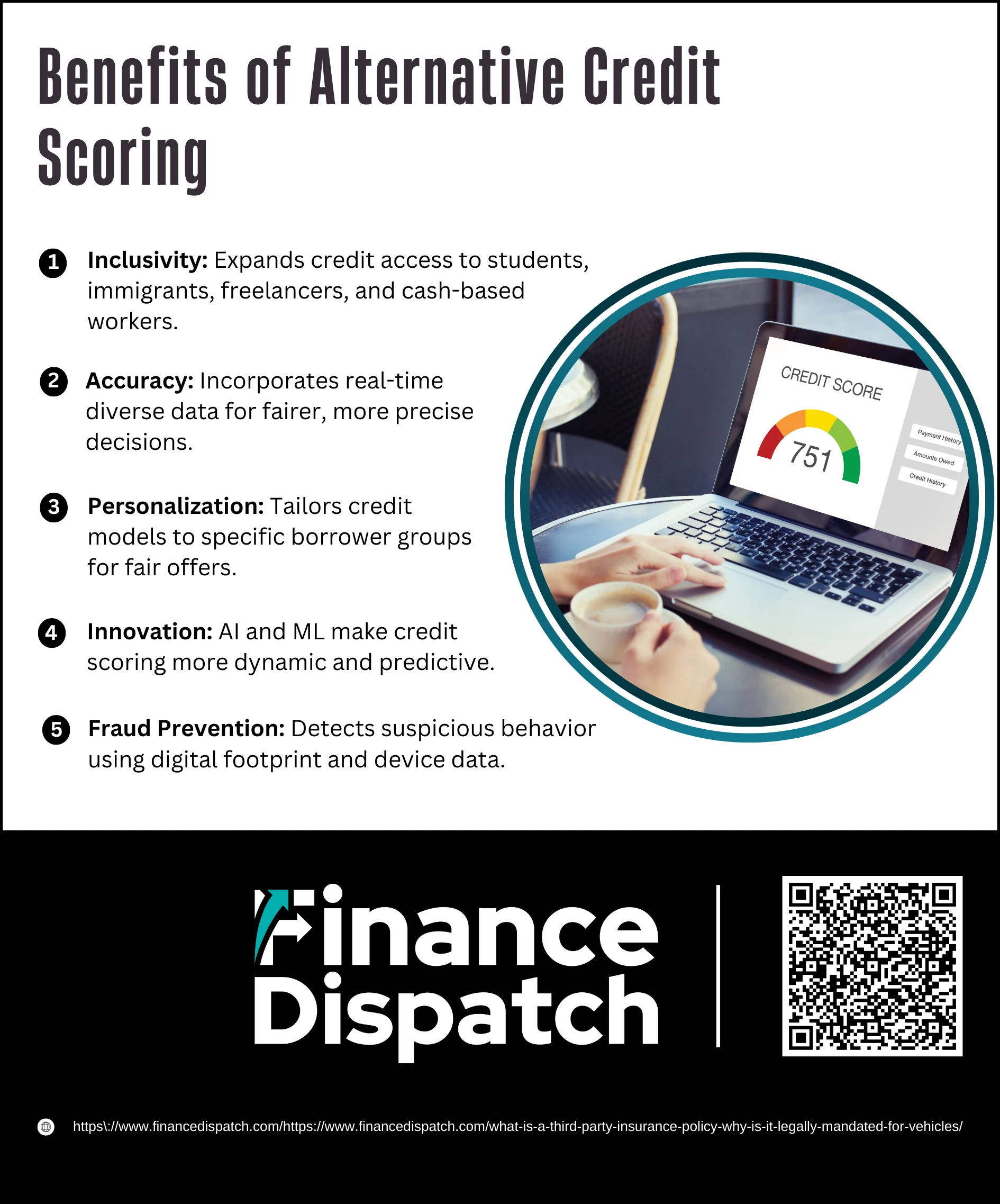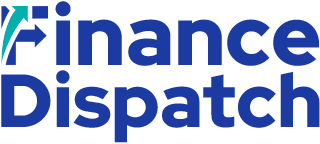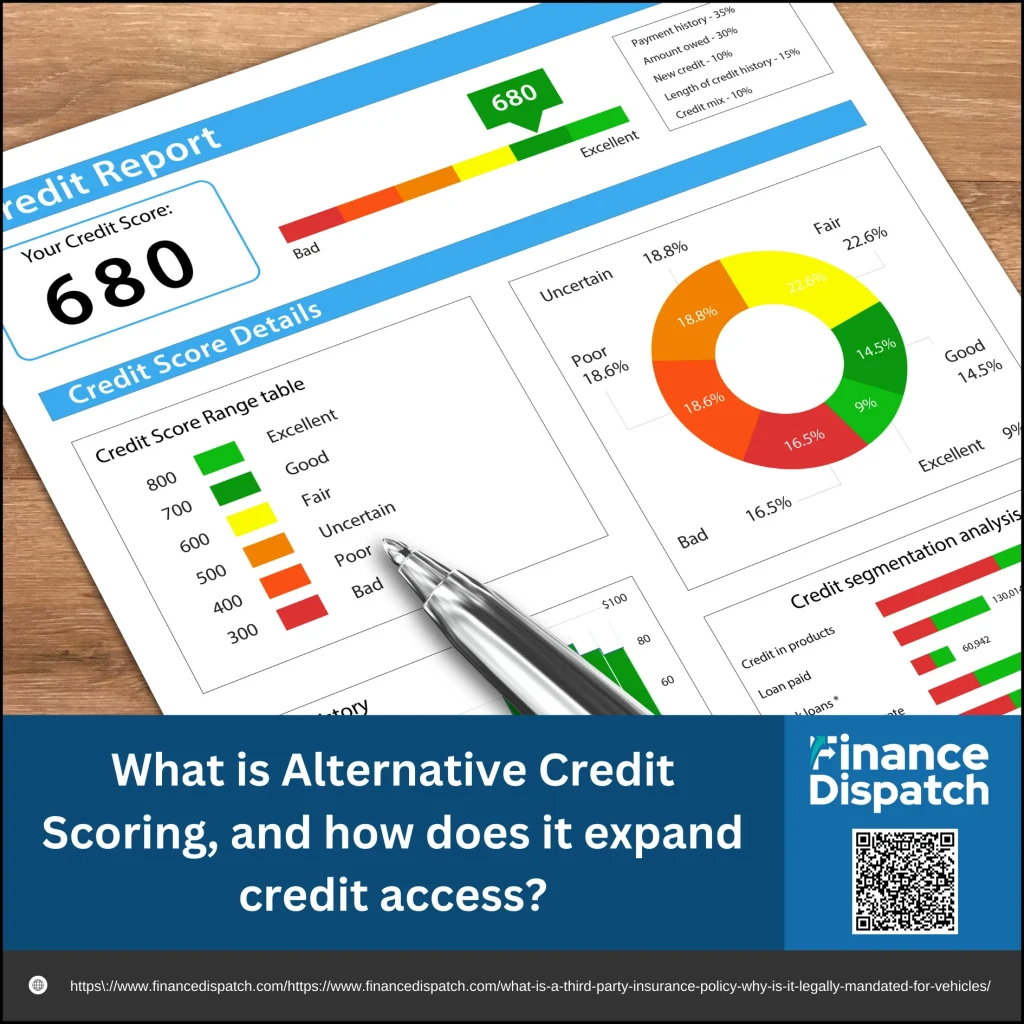Access to credit has long been determined by traditional credit scoring systems, which rely heavily on past borrowing and repayment records maintained by agencies like Experian, Equifax, and TransUnion. While effective in many cases, this model leaves out millions of people. In the United States alone, about 26 million adults are considered “credit invisible” because they have no credit history, and another 19 million have too little data to generate a reliable score. On a global scale, more than 1.4 billion adults remain unbanked, with fewer than 10% listed in public credit registries in low- and middle-income countries. This exclusion means that many capable and responsible individuals struggle to access loans, credit cards, or even basic financial services. Alternative credit scoring steps in to bridge this gap, offering lenders new ways to assess financial behavior and, in turn, expanding credit access to underserved populations.
What is Alternative Credit Scoring?
Alternative credit scoring is the practice of evaluating a borrower’s creditworthiness using data that goes beyond the traditional credit report. Instead of relying only on repayment history with banks or credit cards, it draws from non-traditional sources such as rent and utility payments, bank account activity, employment and income records, digital transactions, and even elements of a person’s online or social presence. This broader approach helps lenders assess individuals who are often excluded by conventional models, such as young adults, immigrants, freelancers, gig workers, or those living in cash-based economies. By looking at a wider set of financial and behavioral signals, alternative credit scoring provides a more complete picture of a person’s ability and willingness to repay, making credit opportunities accessible to people who would otherwise remain invisible to the financial system.
 How Alternative Credit Scoring Works
How Alternative Credit Scoring Works
Unlike traditional models that mainly look at credit card usage and loan repayment history, alternative credit scoring examines a broader set of financial and behavioral data points. This approach helps lenders understand both the ability and willingness of a borrower to repay, even if the person has little or no formal credit history.
1. Collecting Alternative Data
Lenders start by gathering non-traditional information about the borrower. This can include utility and rent payments, telecom bills, mobile money transactions, or even e-commerce purchase history. These everyday financial behaviors show whether someone consistently meets obligations, which is a strong indicator of creditworthiness.
2. Analyzing Bank Activity
A borrower’s bank account behavior often reveals more than a credit report. Lenders analyze patterns like the frequency of deposits, withdrawal habits, and the ability to maintain a positive balance. Regular income deposits and stable savings suggest financial discipline, while frequent overdrafts may signal risk.
3. Evaluating Employment and Income
Consistent employment and steady income are critical for predicting repayment capacity. By looking at job stability, industry type, and income flow, lenders can assess how sustainable a borrower’s financial situation is. For freelancers or gig workers, this may involve analyzing contracts, invoices, or earnings from digital platforms.
4. Considering Education Background
Education can be another factor in alternative credit scoring. A borrower with a higher level of education or professional qualifications often has better employment prospects and stronger long-term earning potential. This adds weight to their overall profile, especially when traditional financial data is limited.
5. Reviewing Digital Footprint
A person’s online behavior can also provide valuable signals. Subscriptions to services like Netflix or Amazon Prime, consistent bill payments, or a verified LinkedIn profile all add credibility. These indicators suggest both financial stability and authenticity, helping lenders confirm that the borrower is a genuine and responsible applicant.
6. Applying Device Intelligence
Beyond financial habits, lenders also study device-related data. Device intelligence involves tracking login consistency, IP addresses, geolocation, and even the type of device used. For example, someone always accessing their account from the same phone and location appears more reliable than an applicant whose data shows irregular logins from different countries, which could indicate fraud.
7. Using Advanced Analytics
Once data is collected, advanced technologies like artificial intelligence (AI) and machine learning (ML) analyze it. These tools look for patterns across thousands of data points and can predict repayment behavior with greater accuracy than manual reviews. By continuously learning from past outcomes, these models improve over time, making alternative credit scoring increasingly precise and reliable.
How Alternative Credit Scoring Expands Credit Access
One of the biggest strengths of alternative credit scoring is its ability to open doors for people who were once excluded from the financial system. Traditional models depend heavily on credit card and loan history, which many individuals—such as young adults, immigrants, freelancers, and people in cash-based economies—simply don’t have. By using signals like rent payments, utility bills, digital wallet activity, and employment records, lenders can identify creditworthy borrowers who would otherwise remain “credit invisible.” This creates a more inclusive financial system while also giving lenders access to new markets and reliable customers.
Table: Traditional Credit Scoring vs. Alternative Credit Scoring in Expanding Access
| Aspect | Traditional Credit Scoring | Alternative Credit Scoring | Impact on Access |
| Credit History Requirement | Relies on long-term credit card and loan records | Uses rent, utility, telecom, and subscription payments | Makes credit available to those with no or limited credit history |
| Target Groups Served | Mostly established borrowers with bank histories | Young adults, immigrants, gig workers, unbanked and underbanked | Broadens eligibility across diverse groups |
| Data Sources | Limited to credit bureaus and repayment records | Bank activity, income, digital footprint, device intelligence | Provides richer, real-time insights into financial behavior |
| Fraud Detection | Dependent on identity documents and past history | Includes device tracking, online behavior, and geolocation | Strengthens trust and prevents fraudulent loans |
| Global Reach | Excludes large populations in cash-based economies | Effective in low- and middle-income countries | Helps integrate 1.4 billion unbanked adults into financial systems |
 Benefits of Alternative Credit Scoring
Benefits of Alternative Credit Scoring
Alternative credit scoring is changing the lending landscape by broadening how financial institutions measure risk. Instead of relying only on credit cards or past loans, it takes into account a variety of financial signals that reflect real-world responsibility. This shift not only improves the accuracy of credit decisions but also makes the financial system more inclusive and adaptive to today’s diverse borrowers.
1. Inclusivity
One of the most important benefits of alternative credit scoring is its ability to bring more people into the credit system. Traditional scoring excludes individuals without established credit histories—such as immigrants, students, freelancers, or those living in cash-based economies. By incorporating rent payments, utility bills, mobile transactions, and subscription records, lenders can extend credit to people who were previously “invisible” in the financial system. This inclusivity gives borrowers access to essential loans and helps them start building a formal financial identity.
2. Accuracy
Traditional credit scores often overlook key aspects of financial behavior, focusing only on loans and credit cards. Alternative credit scoring, however, integrates diverse and real-time data sources, like employment stability, income patterns, and bank account activities. This broader perspective reduces blind spots and allows lenders to make more precise assessments of a borrower’s ability to repay. By capturing a fuller financial picture, lenders can reduce defaults while ensuring that trustworthy borrowers aren’t unfairly denied.
3. Personalization
Unlike the rigid one-size-fits-all nature of conventional models, alternative credit scoring allows for customized assessments. Lenders can tailor their models to specific groups—such as gig workers, rural populations, or younger borrowers—by focusing on the data most relevant to each demographic. This personalization results in more suitable loan offers, fairer interest rates, and repayment terms that reflect the borrower’s true financial reality. It creates a win-win situation: borrowers get products that match their circumstances, while lenders reduce risks by aligning offers more closely with actual borrower behavior.
4. Innovation
Advanced technologies like artificial intelligence (AI) and machine learning (ML) are at the heart of alternative credit scoring. These tools analyze vast amounts of structured and unstructured data to identify patterns that human underwriters might miss. Over time, the models learn and improve, becoming more accurate at predicting repayment behavior. This innovation makes credit scoring more dynamic, scalable, and responsive to new borrower profiles, setting the stage for smarter lending decisions in the digital era.
5. Fraud Prevention
Digital lending brings opportunities but also risks, including fraud and identity theft. Alternative credit scoring tackles this by using tools such as digital footprint analysis and device intelligence. These methods examine login consistency, geolocation, device usage patterns, and even behavioral signals to confirm identity and spot red flags. For example, multiple loan applications from the same device under different names could indicate fraud. By integrating these checks, lenders can better distinguish genuine borrowers from fraudsters, protecting both their revenue and their reputation.
Challenges and Concerns of Alternative Credit Scoring
While alternative credit scoring offers exciting opportunities for inclusion and innovation, it also comes with significant challenges. From data reliability to privacy concerns, lenders must carefully balance the benefits of these models against the risks. Without proper safeguards, the very systems designed to expand access could unintentionally create new problems for borrowers and financial institutions alike.
1. Data Reliability – Alternative data sources, such as social media activity or utility payments, may be inconsistent, outdated, or difficult to verify. This can reduce the accuracy of credit decisions.
2. Privacy Concerns – Collecting sensitive personal, behavioral, or device-based data raises questions about user consent and compliance with privacy laws like GDPR and FCRA.
3. Bias in Algorithms – Although designed to reduce discrimination, AI-driven models can still inherit biases if the data they learn from is skewed, leading to unfair outcomes.
4. Transparency Issues – Unlike traditional scores, many alternative models use complex or proprietary algorithms, making it hard for borrowers to understand how their scores are calculated.
5. Regulatory Uncertainty – Different regions have varying rules on the use of non-traditional data, creating compliance challenges for lenders operating globally.
6. Model Interpretability – Machine learning systems can be powerful but often function as “black boxes,” leaving both regulators and consumers with limited visibility into decision-making.
7. Cybersecurity Risks – Storing and analyzing diverse digital data increases the risk of breaches, making strong data protection measures essential.
Future of Alternative Credit Scoring
The future of alternative credit scoring looks promising as technology and financial innovation continue to evolve. With the growing adoption of artificial intelligence, machine learning, and real-time data analytics, lenders will be able to make more precise and fair assessments of borrowers, even those without traditional credit histories. As more data sources—such as digital payments, gig economy earnings, and verified rental histories—become standardized, the accuracy and inclusivity of credit scoring will only improve. This progress has the potential to bring millions of unbanked and underbanked individuals into the financial system, reducing inequality while offering lenders new markets to serve. However, the future will also require careful attention to privacy, transparency, and ethical use of data, ensuring that innovation in scoring models fosters financial inclusion without compromising consumer trust.
Conclusion
Alternative credit scoring represents a major step forward in making the financial system more inclusive, accurate, and adaptive to modern realities. By looking beyond traditional credit histories and incorporating signals such as rent payments, utility bills, digital transactions, and even device intelligence, lenders can fairly evaluate people who were once left out of the system. This approach not only expands credit access for underserved groups but also helps institutions reduce fraud, improve decision-making, and personalize lending products. Still, challenges like data privacy, transparency, and regulatory compliance must be carefully managed to maintain trust. When applied responsibly, alternative credit scoring has the potential to reshape global lending, bridging the gap between financial institutions and millions of individuals seeking a fair chance at credit.



